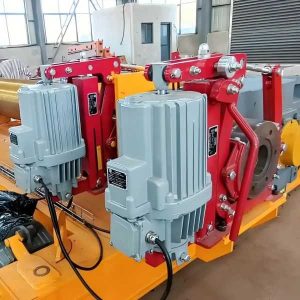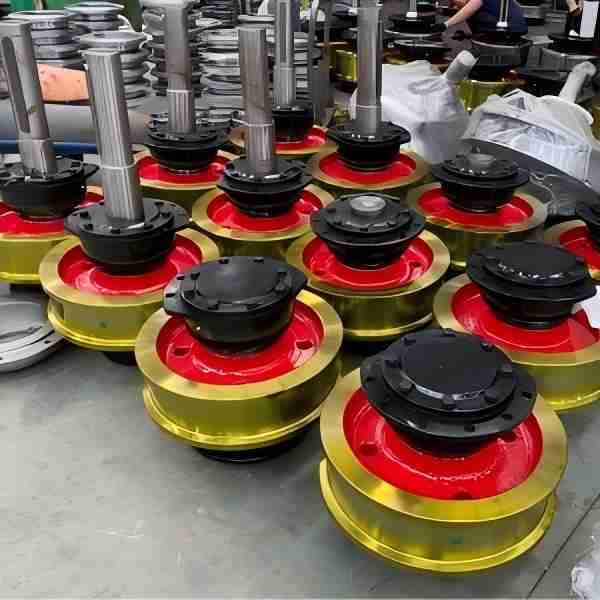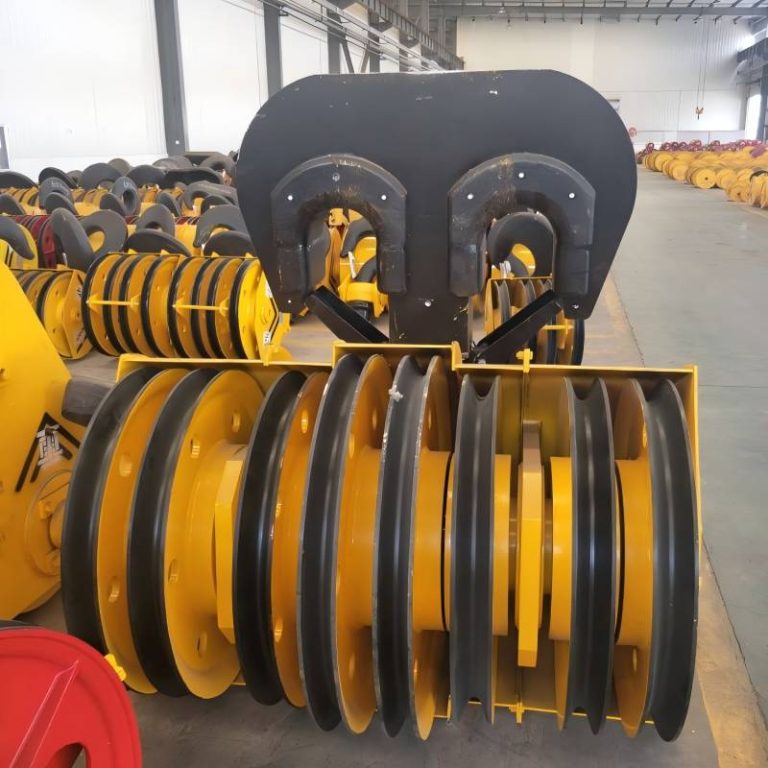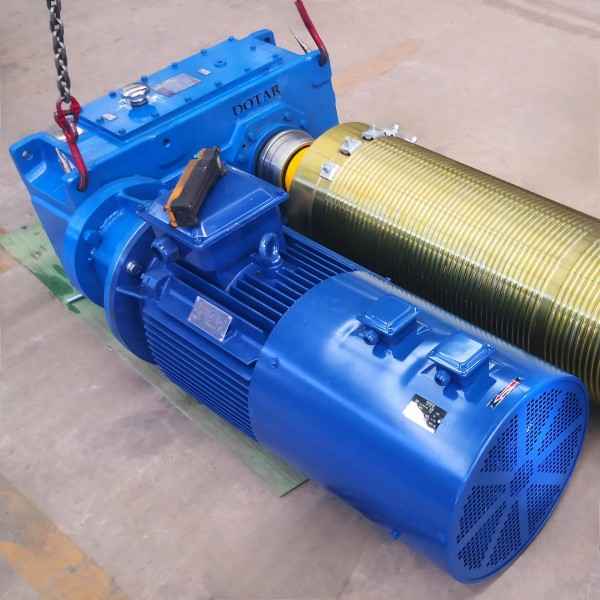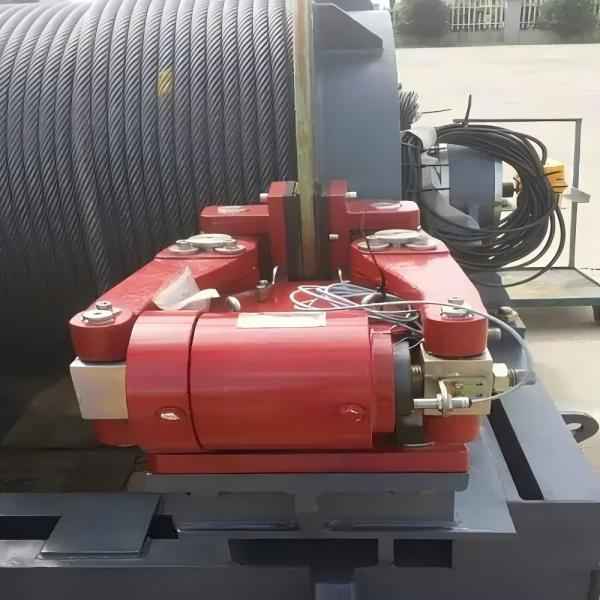Application of Electro-Hydraulic Drum Brakes in Cranes
Electro-hydraulic drum brakes play a crucial role in cranes by ensuring safe and reliable braking. They are widely used in the hoisting mechanism, traveling mechanism, and slewing mechanism to enhance operational stability and safety.
1. Application in the Hoisting Mechanism
Usage Scenarios:
-
Lifting and lowering loads such as hooks, grabs, and electromagnetic lifters.
-
Keeping the load suspended without unwanted movement.
Functions:
-
Enable the crane to stop at any time during operation.
-
Automatically brake in case of power failure or emergencies, preventing load drops.
-
Use a fail-safe braking system (braking occurs when power is lost) to avoid accidental falling.
By ensuring precise load control, electro-hydraulic drum brakes significantly improve safety in hoisting operations.
2. Application in the Traveling Mechanism
Usage Scenarios:
-
Moving the bridge of overhead cranes or gantry cranes.
-
Controlling the horizontal movement of rail-mounted cranes.
Functions:
-
Provide smooth starting, stopping, and deceleration to maintain operational stability.
-
Prevent unintended movement on slopes or in strong winds.
-
Reduce mechanical wear by avoiding sudden stops.
By enhancing motion control, these brakes extend the lifespan of the crane’s traveling components.
3. Application in the Slewing Mechanism
Usage Scenarios:
-
Rotating structures in tower cranes and port cranes.
-
Adjusting the angle of suspended loads during lifting operations.
Functions:
-
Prevent the crane’s slewing system from rotating uncontrollably due to external forces.
-
Ensure precise load positioning during lifting and placement.
-
Lock the system in place during emergencies to protect the equipment.
With these capabilities, electro-hydraulic drum brakes contribute to safer and more efficient crane operations.
4. Typical Application Scenarios
| Crane Type | Specific Application |
|---|---|
| Overhead Crane | Hoisting and traveling mechanisms |
| Gantry Crane | Traveling and hoisting mechanisms |
| Tower Crane | Slewing and hoisting mechanisms |
| Port Crane | Hoisting, slewing, and traveling mechanisms |
| Shipyard Crane | Multi-mechanism coordinated braking |
Clearly, these brakes serve various essential functions across different types of cranes.
5. Selection and Key Features
-
Deliver high braking torque, making them ideal for heavy-duty lifting equipment.
-
Utilize a fail-safe braking system to ensure automatic braking during power failures.
-
Feature automatic wear compensation, maintaining stable braking force even as brake linings wear down.
-
Operate effectively in harsh environments, including high temperatures, humidity, and dusty conditions.
Conclusion
In summary, electro-hydraulic drum brakes are indispensable in cranes. Not only do they enhance safety, but they also improve efficiency and reduce maintenance costs. With their reliable braking performance, they have become a key component in modern crane systems.


